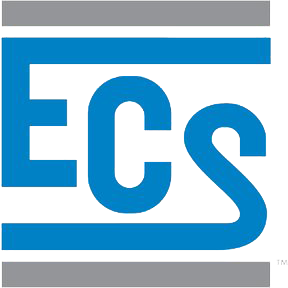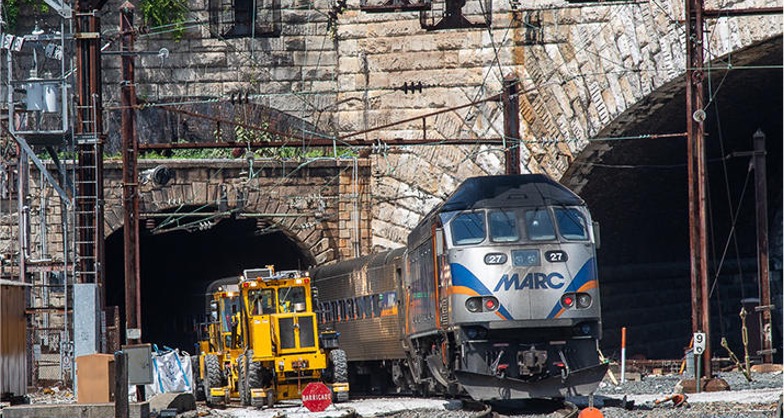The Frederick Douglass Tunnel project in Baltimore, Maryland, is an eight-year initiative led by Amtrak to improve service along the Northeast Corridor. The existing tunnel, built more than 150 years ago, faces significant challenges, including water infiltration and a design that limits train speeds to 30 mph. This bottleneck slows one of the busiest rail corridors in the country. When completed, the new Frederick Douglass Tunnel will accommodate electrified passenger trains and support speeds up to 100 mph.
How is ECS Group of Companies (ECS) supporting the Frederick Douglass Tunnel project?
ECS is providing turnkey environmental support for Kiewit-Shea Tunnel Constructors (KSTC), including pre-construction assessments, soil management, groundwater treatment and excavation monitoring. Our work began with environmental assessments of the 7.5-acre Southern Approach and the adjacent 12.3-acre Flanigan Property to estimate soil volumes requiring disposal and to establish baseline groundwater data for water treatment design. As the project proceeds, ECS will monitor excavation, manage soil disposal and design and operate the groundwater treatment system throughout the project.
What environmental challenges did ECS solve during the project?
The site presented two major challenges: a massive volume of potentially impacted soil—718,000 cubic yards (1,077,500 tons)—and a thick deposit of fill material of unknown origin. ECS developed a cost-effective characterization strategy by combining composite and grab sampling methods. To avoid delays caused by large debris and protect numerous utilities, ECS used a sonic drill rig and employed an air knife and vacuum truck to safely penetrate the top six feet of each soil boring.

What innovative soil and groundwater strategies did ECS use?
ECS implemented a compositing scheme to reduce analytical costs while maintaining data quality. The site was divided into 16 Operable Units (OUs), each excavated in five-foot lifts of approximately 2,000 cubic yards. Within each OU, ECS advanced five soil borings and created five-point composite samples for each depth interval. ECS also introduced an innovative field preservation method to maintain volatile organic compound integrity during sampling. These strategies have helped KSTC achieve reliable waste classification and secure better pricing for disposal.
What lessons and results came from ECS’ work on this project?
Initial results from the first two OUs confirmed the effectiveness of ECS’s approach. By mapping total petroleum hydrocarbon (TPH) concentrations with high granularity, ECS provided important estimates of waste categories, enabling efficient excavation planning and cost management strategies. This methodology will guide future phases of the project and can be applied to similar large-scale infrastructure efforts.
How did ECS demonstrate collaboration and leadership on this project?
ECS collaborated closely with KSTC and leveraged prior experience working with Amtrak to streamline work plan approvals. Our focus on efficiency and leadership led to required plans being accepted on the first submittal, and the first phase of work was finished on schedule and within budget. These efforts demonstrate ECS’ commitment to Collaborate, Focus and Lead.


